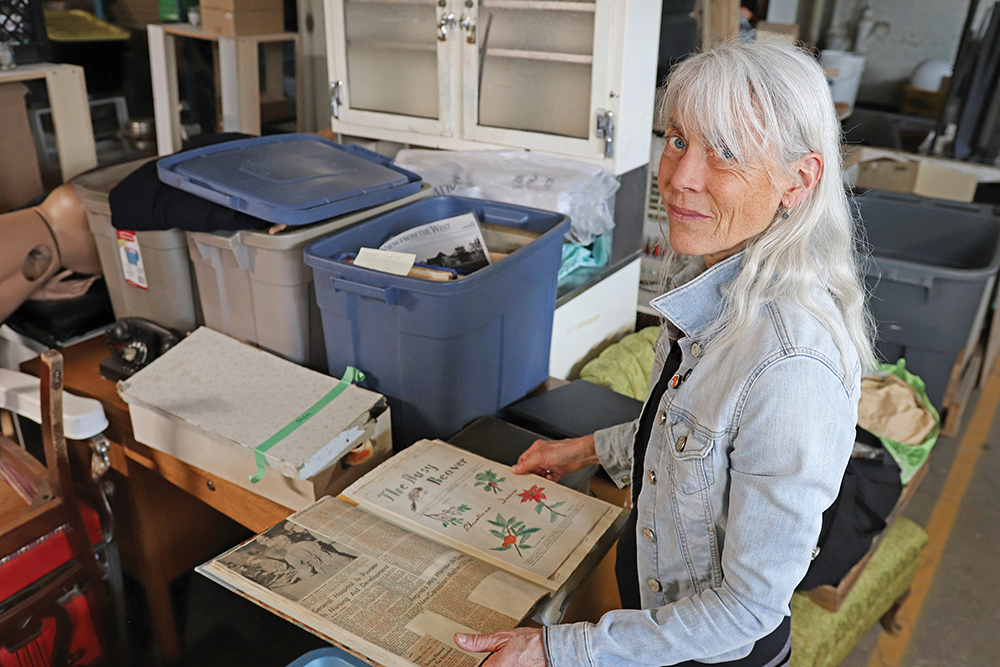


(Clockwise from top) Dr. Madeline Burghardt looks through artifacts from the Manitoba Developmental Centre (MDC); a phone from MDC that a participant used to ‘call’ the facility; keys that symbolized the control the MDC staff had over residents.
Dr. Madeline Burghardt never expected to become an arts-based researcher. But the demands of specific projects have changed her perspective.
“Art is how some projects need to be realized,” says the assistant professor of occupational therapy. “Creative methods are a versatile way for people to share stories.”
Burghardt, who holds a PhD in critical disability studies from York University, became a faculty member of the College of Rehabilitation Sciences in 2023.
One of her current projects focuses on objects that may hold traumatic memories for formerly institutionalized people with intellectual disabilities.
The objects are artifacts from the Manitoba Developmental Centre (MDC), a facility in Portage la Prairie that closed in 2024, after the Manitoba government issued a public apology to former residents who had been mistreated there.
Through a class action lawsuit filed by former residents, Burghardt was able to retrieve artifacts that were considered to have historical or social value.
Over the last year, she’s been working with a group of MDC survivors to decide what to do with the items, such as newspaper clippings, photos, medical equipment, a child’s crib and a leather strap that was used to restrain a person in their bed.
The survivors have responded to the objects through artistic methods such as photography, collage, movement and improvisation.
“One participant picked up this old black phone from the MDC and ‘called’ the institution, improvising with the phone, literally talking back to the institution. And then others followed. It was so powerful.”
Another object that evoked a strong response was a set of skeleton keys that staff carried with them. Burghardt says a local metalworker is collaborating with the group to create a sculpture of a bird, using the keys to represent freedom.
“The keys symbolized the control the staff had. But today they also represent freedom, because the survivors have transitioned to community living and now have keys to their own homes.”
Working with artists Natalie Baird [B.Env.Sc.(Hons.)/14, M.ENV./20] and Toby Gillies [BFA/09], Burghardt and the survivors hope the objects they are “transforming” can one day be shared in a human rights-themed exhibit.
“The participants have been very clear in saying, ‘Our rights were violated,’” the professor says.
Burghardt grew up near Hamilton, Ont., and earned her degree in occupational therapy (OT) at the University of Toronto in 1987.
She started out working with children with disabilities, first in northern Ontario and then in Zimbabwe.
“What appealed to me about OT was it had a real creative element to it. You’re problem-solving to support people in living a meaningful life.”
Burghardt has published research in journals such as the Canadian Journal of Disability Studies. Her doctoral research, which examined the experiences of institutional survivors and their families in Ontario, led her to author a 2018 book, Broken: Institutions, Families, and the Construction of Intellectual Disability.
She also has a role at the St. Amant Research Centre, where she is currently involved in a project with children’s caregivers in a respite program.
“I hope that these projects will support people with intellectual disabilities to share some of their experiences,” Burghardt says. “And I hope that my work helps to transform traditional attitudes about people with intellectual disabilities.”
BY ALAN MACKENZIE
